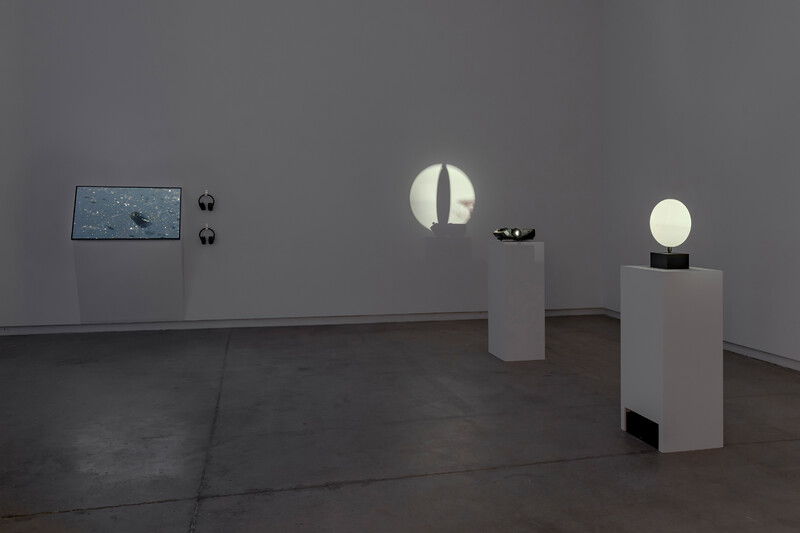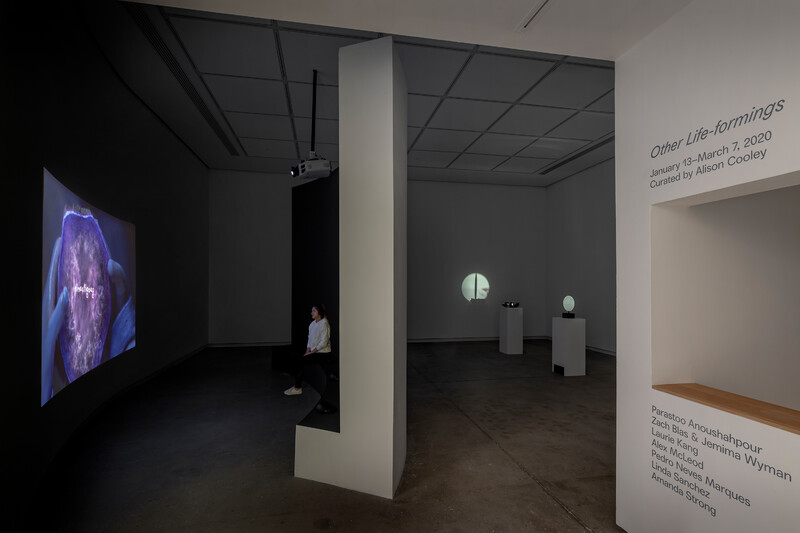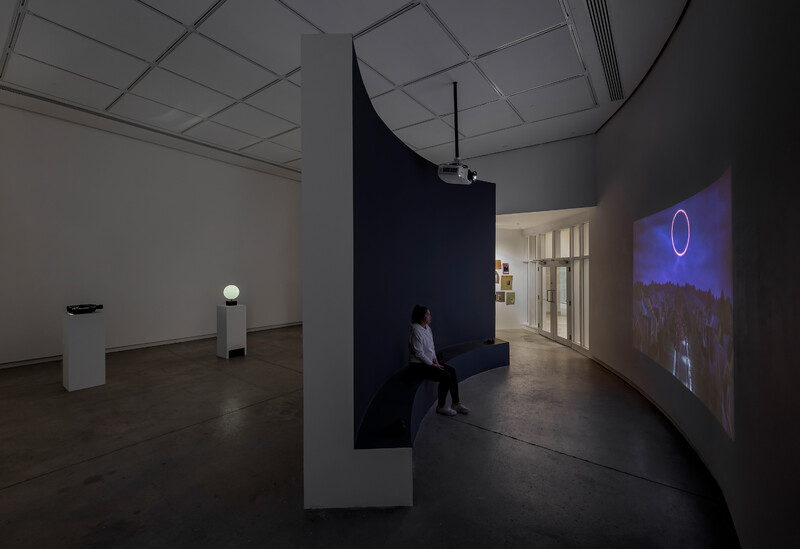



The Lighthouse
The Lighthouse begins with two analogue, two-dimensional photographs, reproduced as slides, which are then converted into a three-dimensional installation. The status of the image and the materiality of photographs here falls into the two dichotomies as The Lighthouse’s function can be placed somewhere between analogue photography and cinema, between abstraction and representation. The projected images were taken on the path to a 12th century lighthouse along the White Cliffs of Dover, UK.
Using a rotating screen and two slide projectors, the project reflects on the notions of arrival and the horizon in relation to the recorded image and memory. The photographs in The Lighthouse mark a history and memory caught within the repetition of the image in the slide carousel and the rotation of the fan. This event is marked by its liminal position, for it is neither a photograph nor a film and yet it marks a time, a place, and a memory. This is an inverted lighthouse, continuously creating and destroying the same ephemeral horizon instead of the promise of arrival and solid land. With every turning of the light the eye discovers the same illusionary land, a distorted recollection of a scene.

The Blackwood
University of Toronto Mississauga
3359 Mississauga Road
Mississauga, ON L5L 1C6
[email protected]
(905) 828-3789
The galleries are currently closed.
Facebook | Twitter | Instagram
Sign up to receive our newsletter.
The Blackwood is situated on the Territory of the Mississaugas of the Credit, Seneca, and Huron-Wendat.